
|   |

|   |
Nrittyangana presents an evening of Odissi recitals and Premanjali - Dr.Nita Vidyarthi e-mail: nitavidyarthi@gmail.com Photos: Bijon Photography July 18, 2024 Odissi dancer Maya Bhattacharya's institution Nrittyangana, Kolkata, recently presented an evening of Odissi dance and a Nrityalekhya Premanjali at Girish Mancha, Kolkata. Garlanded with dance, music, narration, poetry and uncommon romantic songs of the multifaceted rebel poet Kazi Nazrul Islam, the collage Premanjali was a special tribute to the well-known musician Bholanath Bhattacharya, who had passed away recently. Bholanath Bhattacharya was the pivot, the pillar and the motive force behind the institution and its success and had conceived, designed and chosen the songs of Premanjali, in order to pay homage to Kazi Nazrul Islam, on his 125th birth anniversary in May this year. Unfortunately this could not happen due to his sudden demise. So this programme was also an indirect homage to the great poet who was born in Churulia, West Bengal and happens to be the national poet of Bangladesh and occupies a very special place in the Bengali psyche. After the inauguration by offering flowers to the photographs of Guru Kelucharan Mohapatra (under whom Maya who is also a professional theatre artist, had honed her dancing skills) and Bholanath Bhattacharya, placed on one corner of the stage, the first half of the program began with the ritualistic Mangalacharan, a Ganesh Vandana, set to raga Megh Kedar and tala ektali. The choreography was by Guru Kelucharan Mohapatra with music composed by Bhubaneswar Mishra and performed proficiently by the dancers of the institution. Maya joined in to add an extra flavour to the item with her expert dancing. Out of the several items by the dancers of the institution, Mohana Pallavi in taal triputa impressed. The very apt number for the season displaying the moving monsoon clouds set to raga Shankarabaranam in the song "Marey bana dhara Shravan ki" (The showers of the month Shravan hit like arrows) stood out for the poetic acumen and kinetic dimension of the classical dance doing justice to the choreography and music. 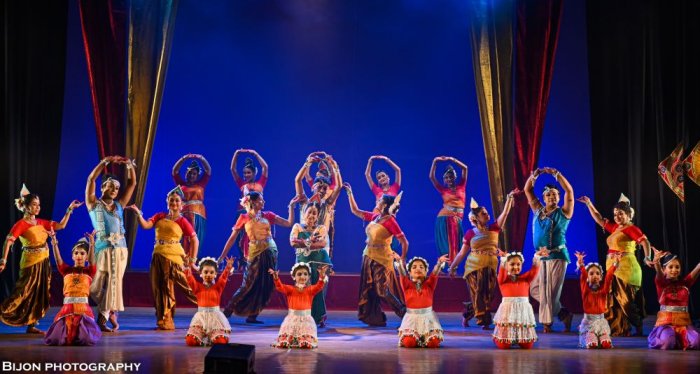 Nrittyangana ensemble Two items which are Purvanga or basics of Odissi dance by juniors need mention. First 'Sthanak', the display of basic foot positions and padabhedas by tiny tots and second by a slightly elder age group was Chaari (feet movements) or Chaali (walking systems), both set to music. The latter 'Gati' had been conceived by Guru Muralidhar Maji and was demonstrated with the walking or movements of animals and birds like elephants and peacock. Chaali was set to taal Khemta. These items normally not a part of a program were a welcome inclusion for the lay audience to get familiar with the basic footsteps (or exercises) of Odissi for better appreciation and understanding of the dance form. No Odissi performance is complete without an ashtapadi by Kavi Jayadeva. The choreography by Maya was imaginative with one male and two female dancers in the fourth ashtapadi "Chandana charchita neelakalebara…" beginning with the third line "Haririha mugdha vadhunikarey vilasini vilasati keliparey" from the First Canto. To this combination of superlative lyrics and melodious singing of Guru Ghanashyam Panda there was directness of appeal in the dancing with no loose movements, with a mash on the rhythm in performance. 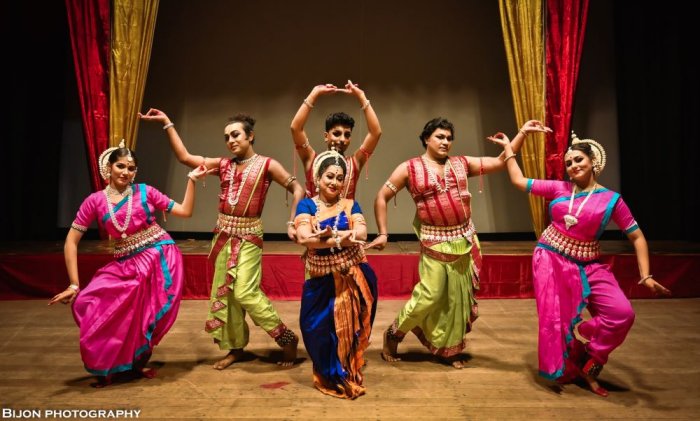 Maya Bhattacharya and ensemble Premanjali, the Nrityalekha in the second half with choreography and dance direction by Maya Bhattacharya and Satyajit Kundu, comprised of seven seldom heard romantic songs of Nazrul smeared with emotions, bright costumes, picturesque backdrop and appropriate light designing (not usually experienced) by Uttiya Jana. Here Maya, who had given many remarkable performances earlier revealed all the potentials as a talented choreographer as well as an impactful solo dancer. 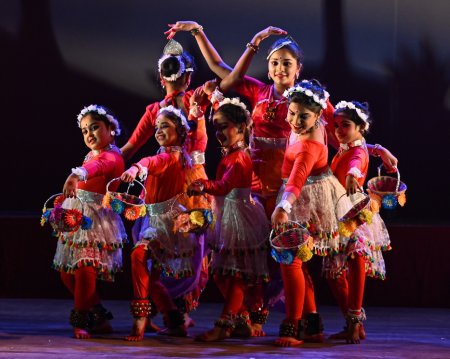 Premanjali 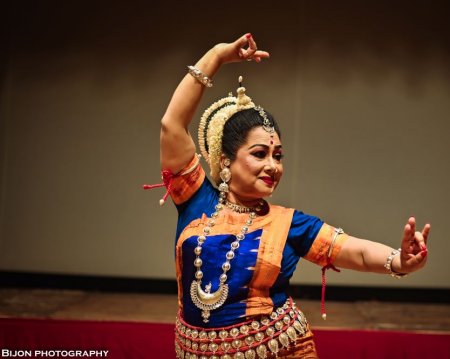 Maya Bhattacharya Beginning with "Akashey aaj chhadiye dilam priyo aamar kathar phool go" (I have sprinkled my words like flowers dear, on the sky), a comparatively popular number, the stage was vibrant with a splash of red colour by the playful number "Shiuli tolaye bhor belaye kusum tolaye" (picking flowers under the Shiuli tree early morning) presented by children in red dresses with baskets in hand, dancing around a tree joyfully picking up flowers. The choreography was an artistic blend of dancing and movements of realistic activity, definitely praiseworthy. The duets "Tumi aamar sokalbelar sur" (you are the tune of my morning) "Tomakey podiyachhey mone" (I am remembering you), "Chander moto nirobey esho priyo" (Come to me silently like the moon) by Maya and a male dancer was bestowed grace and dignity on the dance. The last number had two pairs of male-female dancers with interesting entry and exit during the presentation. The choreography is steeped in traditional but with a contemporary touch and gave a pictorial effect. "Potho hara pakhi" (lost bird) had an interesting combination of three male dancers who enter and leave the stage for Maya to perform a stunning solo which was received very well by the spectators. "Mor piya hobey esho rani" (come be my queen, my love) and the concluding "Madhukara manjira baajey baajey" where girls dressed as bees flutter around the stage were two harmonious and joyous numbers. Maya Bhattacharya has tried to avoid repetition of movements in her choreography but the high point of this sharp, clearly enjoyable production was the support of the team behind it. With music direction by Bappa Chatterjee and Bholanath Bhattacharya, the script was by Amitava Dasgupta. The singers were Sujoy Bhowmik, Swakshar Basu, Tulika Chakraborty and voice over was by Amitava Dasgupta and Sreeparna Auddy. 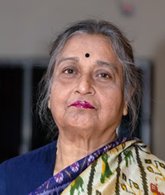 Dr. Nita Vidyarthi is a veteran critic of performing arts and writes on dance, music and theatre in leading publications. |